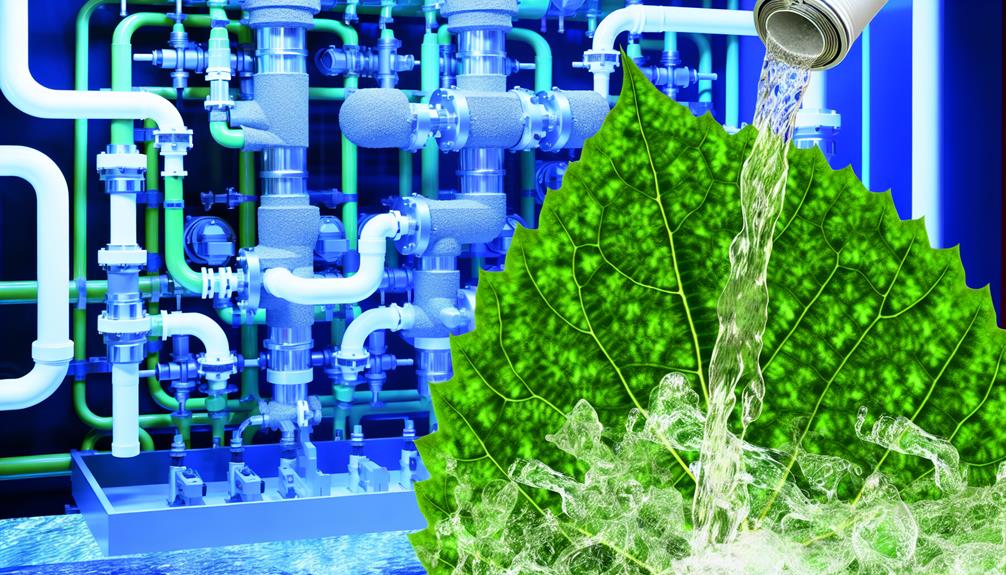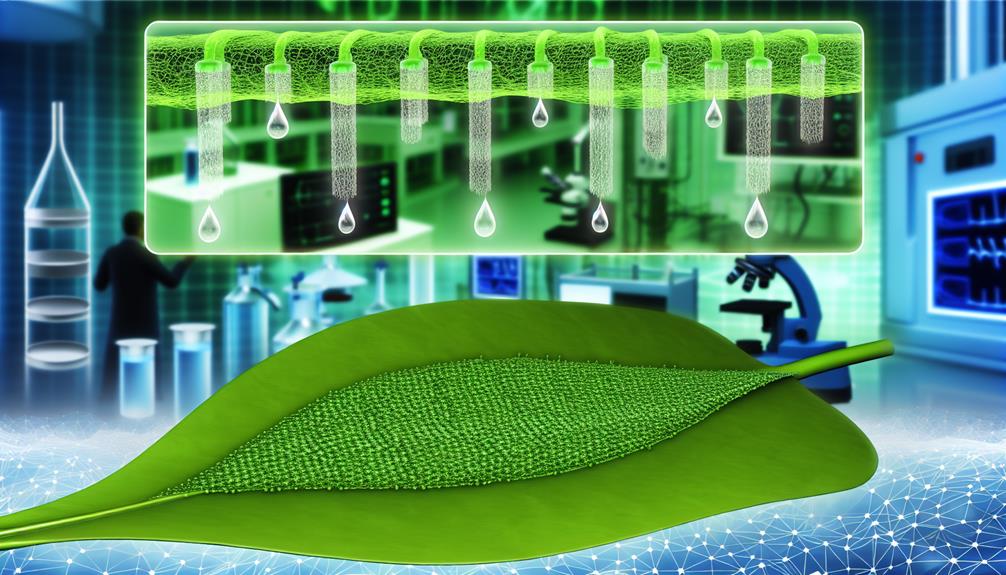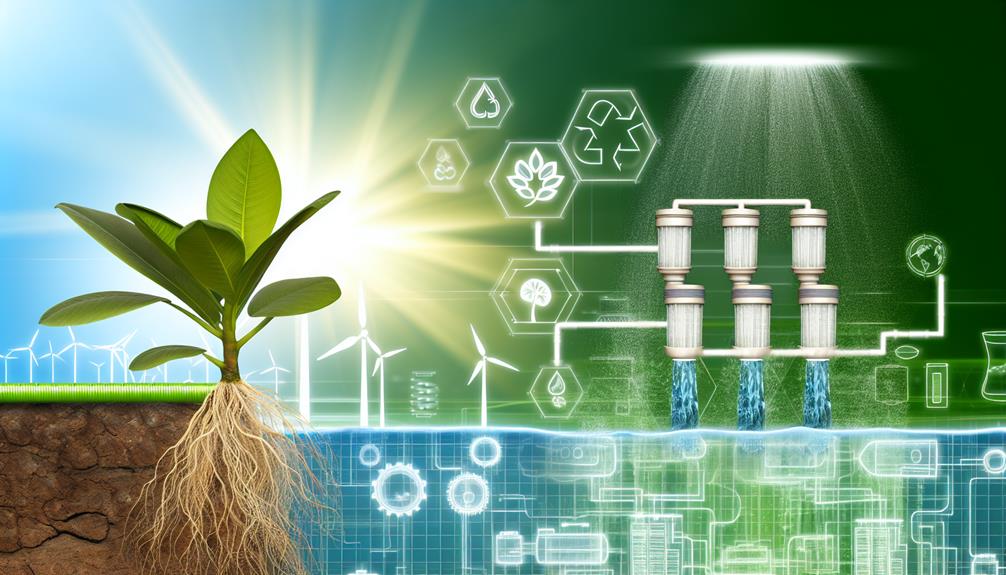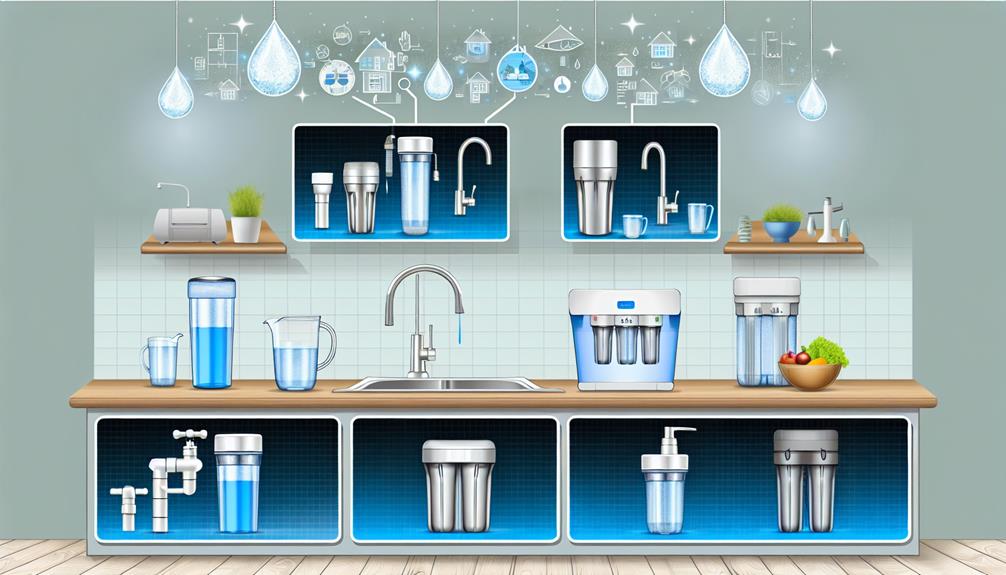As a gardener skillfully prunes a tree to encourage growth, so too does the field of green water filtration technology constantly shed its old leaves to make way for fresher, more efficient ones.
You're standing at the forefront of an evolving landscape where innovation springs forth from the desire to merge environmental stewardship with pure, clean water. Advances such as biodegradable materials and solar-powered systems represent just the tip of the iceberg.
With nanotechnology and the Internet of Things weaving their way into the fabric of modern filtration methods, you'll find that water treatment is becoming smarter, more efficient, and more sustainable.
But what exactly are the mechanisms behind these advancements, and how are they contributing to a greener planet and healthier societies? Stay with this thread as we explore the latest breakthroughs that are setting new standards in the quest for eco-friendly water purification.
Advanced Biodegradable Filter Materials

Nearly all traditional water filtration materials face the twin challenges of environmental persistence and disposal concerns, propelling the development of advanced biodegradable filter materials designed to address these issues effectively. You'll find that sustainable sourcing is at the forefront of this innovation, with particular emphasis on algae-based innovations.
Algae, as a renewable biopolymer, shows significant promise due to its relatively rapid rate of biodegradation compared to conventional filter media. The use of algae not only contributes to the reduction of plastic waste but also encourages a closed-loop system from sourcing to disposal. Algae-based filter materials, through recent studies, have demonstrated a capacity for high-efficiency contaminant removal.
You should consider the data-driven approach that quantifies the lifecycle and efficacy of these biodegradable filters. For instance, research indicates that certain algae-derived substances can achieve up to 95% effectiveness in removing heavy metals from contaminated water. Moreover, the carbon footprint associated with the production and decomposition of algae-based filters is markedly lower than that of traditional polymeric materials.
In your applications, prioritize products that leverage these biodegradable advancements, ensuring that water treatment doesn't come at the expense of environmental sustainability.
Solar-Powered Water Purification Systems
As you turn towards renewable energy solutions for water purification, consider the efficiency of solar-powered systems that harness the sun's abundant energy to deliver clean water without reliance on grid electricity. These systems aren't only sustainable but also offer innovative desalination integration, transforming saline water into potable resources, a critical solution for areas with limited freshwater.
Solar-powered purification technologies typically utilize photovoltaic cells to convert sunlight into electrical power, which then drives the purification process. The latest advancements include the use of high-efficiency solar panels coupled with energy storage systems, ensuring a constant supply of clean water even during non-daylight hours. This renewable efficiency is crucial in remote regions where traditional energy sources are scarce or non-existent.
Moreover, the integration of solar thermal energy for desalination processes is gaining traction. By heating water to create steam, which then condenses into fresh water, these systems can operate without the need for complex electrical components, thereby reducing maintenance requirements and enhancing longevity.
Data-driven assessments have shown that solar-powered water purification systems can significantly reduce carbon footprints and operational costs when compared to conventional methods. As technology advances, expect to see a rise in their implementation, providing a greener footprint for water purification infrastructure.
Nanotechnology in Water Treatment

Leveraging the precision of nanotechnology, water treatment processes have evolved to capture and remove even the most minuscule contaminants, enhancing purification at a molecular level. Membrane innovation, central to this advancement, employs nanofibers and nanopores to filter out pathogens, heavy metals, and organic pollutants with unprecedented efficiency. These membranes, often composed of carbon nanotubes or graphene oxide, combine high flux rates with superior selectivity, ensuring rapid water throughput without compromising on purity.
You'll find that contaminant detection has also become more sophisticated with nanotechnology. Quantum dots and nanosensors now identify toxins at concentrations previously undetectable, down to parts per billion. This heightened sensitivity allows for real-time monitoring and immediate response to water quality issues, reducing potential health risks associated with delayed contaminant recognition.
Data-driven analyses validate that nanotechnology-enhanced filtration systems not only exhibit a higher removal efficiency but also consume less energy and maintain operational effectiveness longer than conventional systems. The integration of these nano-structured materials into existing filtration infrastructure is pivotal for the future of sustainable water management, offering you a greener, cleaner, and technologically superior solution to water purity challenges.
Smart Water Filters and IoT Integration
Building on the foundation of nanotechnology-enhanced filtration, smart water filters integrated with the Internet of Things (IoT) elevate water purification to a new level of intelligence and control. These advanced systems utilize smart monitoring capabilities to track filtration performance in real-time. You can now receive instant data on the quality of your water and the efficiency of your filter's operation.
Smart filters come equipped with sensors that provide critical filter analytics, alerting you to replace or clean the filter media as necessary. This proactive approach ensures optimal functionality and extends the lifespan of the filter unit. The connectivity afforded by IoT integration means that you can monitor and manage your water filtration system remotely through a smartphone app or web interface.
You'll find that the precision of these smart systems allows for a significant reduction in water waste, as they can adjust filtration processes based on the detected level of contaminants. Moreover, the data collected can be used to analyze consumption patterns and predict future filtration needs. This level of detail-oriented management contributes to a more sustainable water usage pattern and pushes the boundaries of green water filtration technology.
Plant-Based Water Filtration Methods

Delving into the realm of eco-friendly water purification, plant-based filtration systems offer a sustainable alternative by mimicking nature's own methods of cleansing water. Recognizing the growing necessity for such innovations, you'll find that the latest advancements aren't just intriguing—they're imperative for sustainable water management.
The techniques harnessed are sophisticated, and they're grounded in a deep understanding of ecological processes. Here are some of the key components:
- Algae Biofilters: Utilizing the natural affinity algae have for nutrients and heavy metals, these systems can effectively reduce nitrogen, phosphorus, and other contaminants.
- Root Zone Purification: By leveraging the symbiotic relationship between plants and microorganisms, root zone methods efficiently filter and degrade organic pollutants.
- Phytoremediation: This involves certain plants known to absorb specific contaminants, such as heavy metals, from water.
- Constructed Wetlands: These engineered ecosystems replicate the filtering capabilities of natural wetlands, providing habitat while purifying water.
- Bioswales: Designed landscapes that use vegetation and soil to manage and treat stormwater runoff.
Your engagement with these plant-based methods isn't just an environmental statement; it's an active step towards a cleaner water future. The data-driven results from these systems demonstrate their viability, with algae biofilters showing removal efficiencies up to 90% for some pollutants. Embracing root zone purification not only aids in reducing chemical usage but also enhances water quality by tapping into the innate purifying properties of plant and soil microbiomes.
Conclusion
As you've seen, green water filtration tech is rapidly evolving. Biodegradable materials are reducing waste, while solar-powered systems harness renewable energy, ensuring sustainability.
Nanotechnology offers precise contaminant removal, and IoT integration brings efficiency through smart monitoring. Plant-based methods, mimicking natural purification, show immense promise.
Collectively, these innovations aren't just environmentally sound but are paving the way for a future where clean water is accessible and sustainable, backed by data-driven results and meticulous engineering.

